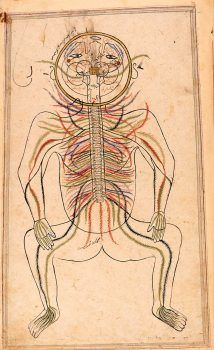Gal Koplewitz in MIL:
 During his long journey through Europe and the Levant in 1867, Mark Twain stopped off in Milan. Like many, he was struck by the grandeur of the city’s great cathedral, but it was something else that truly became etched in his memory. Standing inside the cathedral was a statue of St Bartholomew, the apostle who had been skinned alive, and who was depicted with his skin draped around his shoulders as if it were a towel. In “The Innocents Abroad”, Twain’s account of that year of travel, he recounts: “The figure was that of a man without a skin; with every vein, artery, muscle, every fibre and tendon and tissue of the human frame represented in minute detail… It was a hideous thing, and yet there was a fascination about it somehow.”
During his long journey through Europe and the Levant in 1867, Mark Twain stopped off in Milan. Like many, he was struck by the grandeur of the city’s great cathedral, but it was something else that truly became etched in his memory. Standing inside the cathedral was a statue of St Bartholomew, the apostle who had been skinned alive, and who was depicted with his skin draped around his shoulders as if it were a towel. In “The Innocents Abroad”, Twain’s account of that year of travel, he recounts: “The figure was that of a man without a skin; with every vein, artery, muscle, every fibre and tendon and tissue of the human frame represented in minute detail… It was a hideous thing, and yet there was a fascination about it somehow.”
Animated by this same fascination, physicians and artists have, over the centuries, opened up the human body and recorded what they discovered inside, as visitors to a new exhibition at the Royal College of Physicians in London will find. “Under the Skin” brings together a small yet impressive selection of anatomical illustrations, produced primarily by Western physicians and artists (though there are some striking exceptions) from the late Middle Ages through to the 20th century. These scrolls, prints and woodcuts show how these scientists grappled with the challenges of representing human anatomy, and in so doing made illustrations that are as gruesome as they are compelling.
More here.
